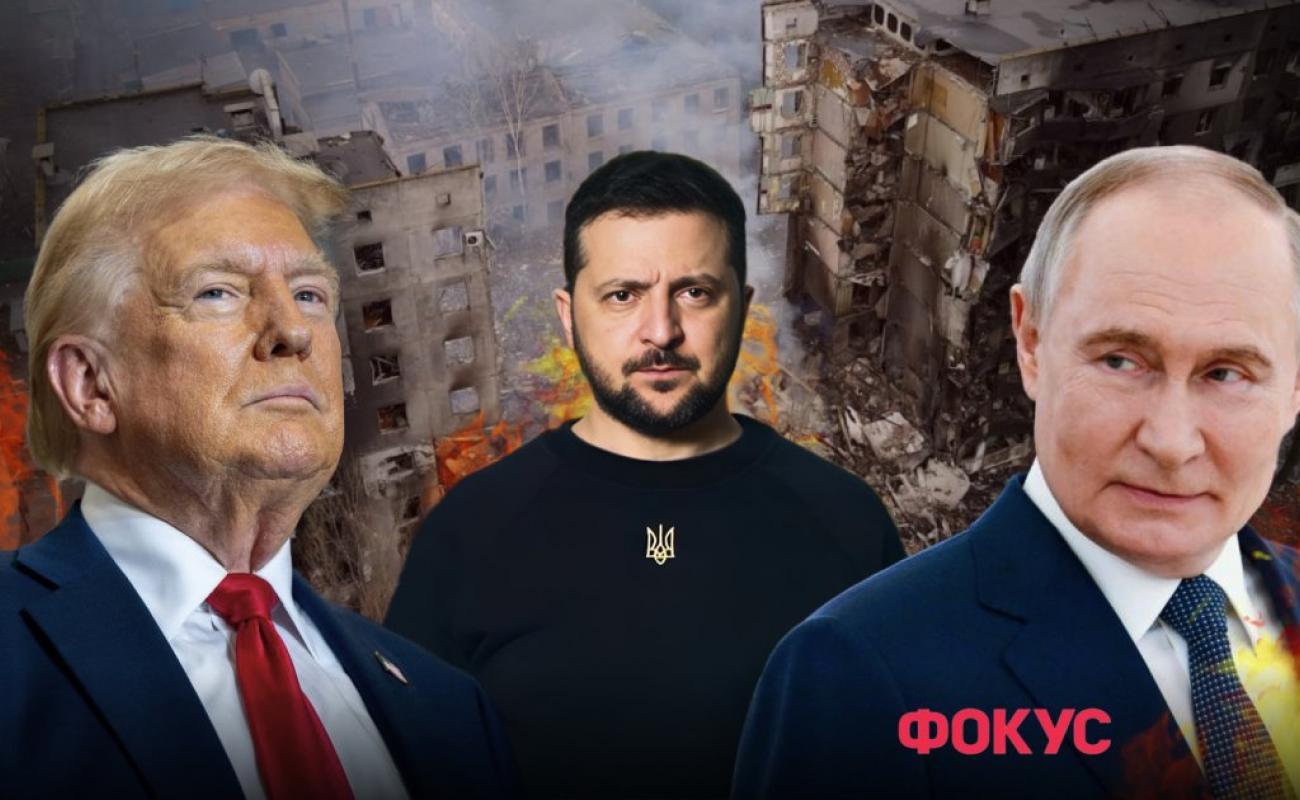Putin's Peace: What the Kremlin Leader Wants to "Squeeze" Out of Trump

You shouldn't trust Putin, Lavrov, Dmitriev and other Kremlin figures, warns political scientist Volodymyr Fesenko. In fact, Russia's willingness to engage in direct negotiations with Ukraine, without preconditions, is just part of the game Putin is playing against Trump.
Peculiarities of Putin's strategy and tactics regarding Trump and "peace talks"
Contradictory statements coming from Moscow about Russia's readiness for peace talks and a ceasefire in Ukraine are confusing the situation to the maximum and making it unclear what the Kremlin actually wants. Peskov declares that Russia is ready for peace talks without preconditions, and then Lavrov puts forward a whole list of such demands. After that, Putin himself announces another "truce".
In fact, one should not draw any big conclusions from individual statements and actions of the Kremlin. We need to understand Putin's long-term goals and the specifics of his tactical game.
Putin’s main goal, which is why he started the war against Ukraine, is to destroy the country’s independence, to restore Russian control over Ukraine either through military victory or by forcing a “peace” on Russian terms. And so far, there is no reason to believe that Putin’s intentions towards Ukraine have changed radically.
But after Trump returned to power in the United States and demonstrated his intentions to end the war in Ukraine and improve relations with Russia, the Russian dictator had a new goal - to conclude a grand geopolitical (and geoeconomic) deal with Trump and thereby divide the unity of the Western world, restore and strengthen Russia’s global influence, while at the same time reducing Russia’s dependence on China. In fact, Putin had previously sought a “Yalta 2,” a division of spheres of influence between the West and Russia. And now, with Trump’s return to the White House, certain opportunities for such a scenario have arisen.
The intentions of the Kremlin masters regarding Trump in no way contradict his desire to destroy or subjugate Ukraine. Only now he wants to do it using (overtly or covertly) the specifics of Trump's approach to foreign policy. That is, if Trump wants peace, then Putin offers him the opportunity to end the war in Ukraine, but mainly on Russian terms. Through the alleged "peace talks", the Kremlin wants Trump to put pressure on Kiev and persuade the Ukrainian authorities to make peace on Russian terms. And if that fails, then he will accuse Ukraine of unwillingness to end the war, pressure Trump to withdraw from the peace talks and completely stop military support for Ukraine. In parallel, Putin will continue negotiations with the White House with the aim of concluding a "Grand Deal" between Russia and the United States, attracting Trump with attractive business projects.
So, the ideal scenario for the Kremlin is to reach an agreement with Trump and force Ukraine to make peace on his terms, or to reach an agreement with Trump and continue the war in Ukraine.
To realize this scenario, Putin uses appropriate tactical means. From time to time, the Kremlin, and the Russian dictator himself, assure Trump that Putin sincerely seeks peace, has a very good attitude towards the current American president and wants to reach an agreement with him on mutually beneficial terms. To this end, appropriate peace statements are made (recently, about temporary "ceasefires"), flattery is poured out in torrents towards Trump, his portraits are painted, super-attractive business projects are offered, and Trump's special representative Steve Witkoff is persistently treated. But then, when concrete negotiations to end the war begin, the Kremlin begins to set conditions and demand unilateral concessions from Ukraine and even the US. The tactic of delaying the peace negotiations is actively used. For Russia, this is not a goal, but a tool. The Kremlin also wants Trump to lose his patience, but in connection with Ukraine.
Different tactical tasks for the Kremlin are carried out by different Putin people. Kiril Dmitriev plays the role of the "benevolent negotiator" from the US and the "business seducer", and Sergei Lavrov, the Russian foreign minister, plays the role of the "evil negotiator". Lavrov became a kind of "reincarnation" of Andrey Gromik, the former Minister of Foreign Affairs of the USSR, who was then called "Mr. No" in the West because of his ultra-hard negotiating position. The presence of negotiators who perform opposing tasks enables Putin to maneuver and apply double standards in relations with the US on the topic of peace negotiations.
Some observers believe that Dmitriev and Lavrov represent competing groups in the Kremlin. Dmitriev represents the conditional "party seeking an agreement with Trump", and Lavrov - the "party of continuing the war against Ukraine". Their simultaneous or alternating use also allows Putin to maintain a balance of opposing interests in his environment. Understanding the specifics of Putin's tactical tools is necessary in order not to draw premature and generalized conclusions from individual statements and actions of official Kremlin representatives. It is important not to confuse Putin's tactical maneuvers with his real policy. At the same time, Ukrainians, and especially Americans, must take into account these dual current strategic goals of the Kremlin. Putin's interest in agreements with Trump can be used to exert negotiating pressure on Russia. Instead of making concessions to the Russians to force them to agree to a ceasefire, the US should issue a harsh ultimatum to the Kremlin - either urgent negotiations and agreements on a ceasefire (and only then negotiations on other issues), or the termination of the agreed dialogue between the US and Russia. The Americans should threaten to withdraw from the negotiations. At the same time, sanctions against the Russian Federation can be strengthened. Ultimately, the White House must show the Kremlin strength and negotiating firmness. And then it will have the necessary effect.
